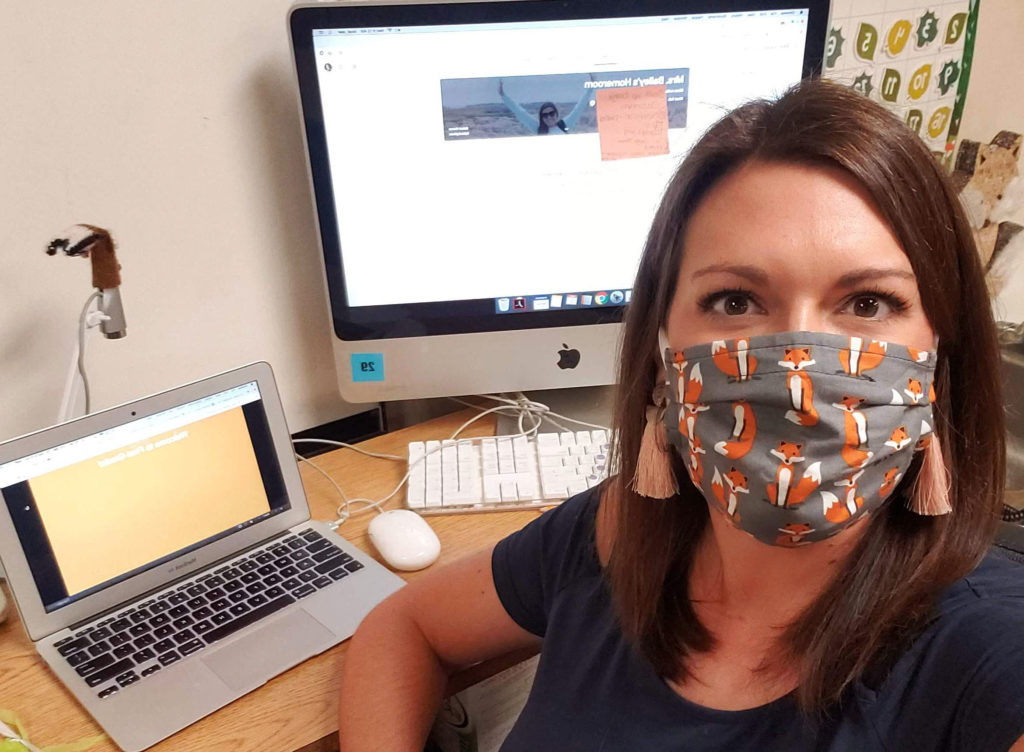
Last spring school districts across Tennessee engaged in a rigorous adoption process to vet and select new instructional materials for English Language Arts (ELA). Based on the work of Tennessee’s early adopters in the LIFT Network, we know these materials have the potential to dramatically improve outcomes for Tennessee students. But as many teachers launch this school year with some or all students learning remotely, implementing new instructional materials feels like a monumental task.
We recently spoke with a first-grade teacher from the LIFT Network who shared the benefits of high-quality instructional materials for meaningful and engaged at-home learning. Lize Bailey, a first-grade teacher at Rock Spring Elementary in Sullivan County, uses the Core Knowledge Language Arts (CKLA) curriculum to support ELA instruction. She explains how high-quality instructional materials benefit students while also easing the burden on teachers.
Q: Lize, how did CKLA support your shift to remote learning this spring?
A: I wasn’t searching high and low for resources to use. It was easy to bring CKLA materials home and to implement them using online platforms. My students were already used to the structure, routine, and high expectations of our curriculum — and students thrive with structure and routine. CKLA provides that to students, and it makes it easier for them to be engaged and know what is expected of them. At the beginning of this school year, we set those same expectations for students. We spent the first couple of days going over routines and how classes are structured.
Q: Did your planning look different as you prepared for remote instruction using CKLA?
A: I know how important it is to teach with fidelity, so I made sure to not pick and choose different parts of each lesson. Some of those parts were harder than others to teach remotely, but I tried my best to make it work. In the spring I recorded my lessons, but I have found it is much easier to teach all of these components “live” on a Google Meet. Google Slides helped me format my lessons. I have always used this for the image cards, but now I’ve tweaked it to work in the classroom and to have everything in one spot for my learners who are at home and tuning in to live sessions or watching the recording later.
Q: Did having a team of teachers in your district using the same curriculum support your shift to remote learning?
A: I was in the group of pilot teachers in my district, “The Gamechangers.” When we started the Gamechangers, we became a CKLA family. Even though I do not see the teachers at other schools as often anymore, I made great connections with them and reached out to several of them seeking ideas for how to approach this new way of teaching. I also had a lot of them reach out to me. Teaching the same content and using the same pacing guides makes it easier for us to work and plan together.
Q: What advice do you have for teachers who are using new instructional materials AND supporting students to learn from home?
A: Don’t water down your instructional materials. Students are capable of doing the work at home, it just may take a little more modeling from your end! Think ahead of what students need for a unit or domain. We created take-home packets with CKLA worksheets, chaining folders, and Skills readers. FlipGrid has been a great resource to assess students from home and to see how much prompting they are getting from caretakers. It has helped me to determine whether students are understanding and grasping content. And one last tip: Communication with families is KEY to making remote learning successful.
Kate Glover is director of TNTP, a national organization that advances policies and practices to ensure effective teaching in every classroom.
Next on the blog: Wendy Jones, a first-grade teacher at Lenoir City Elementary School, discusses her use of the EL Language Arts curriculum to support ELA instruction.
More educator voices:
